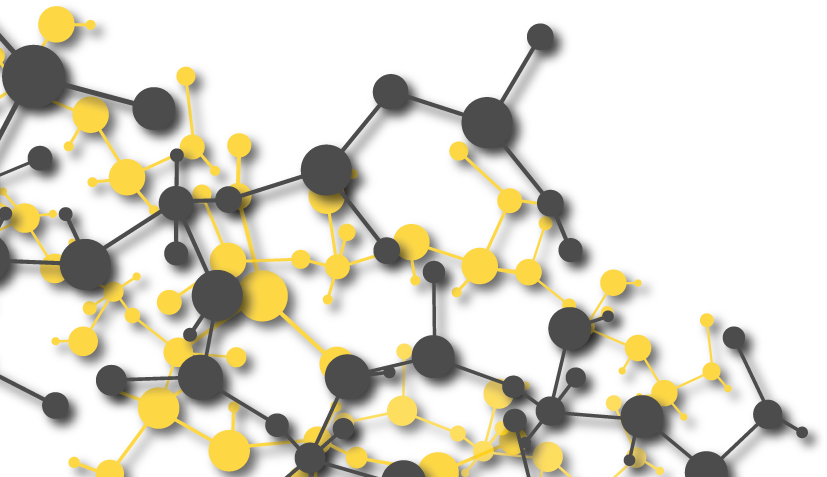3D printing is one of the fastest-growing and most transformative fabrication technologies in the modern era, due to the benefits of manufacturing parts with complex geometries, reducing cost and weight, and achieving dimensional accuracy. It’s often the only feasible technology for producing specific, complex parts with intricate details that are simply not possible using conventional manufacturing.
The boom in demand for 3D printing technologies is simultaneously driving growth within the 3D printing specialty materials market. The size of the global 3D printing materials market is estimated to be $1.3 billion in 2020, with a projected CAGR of about 20 percent thru 2025. The largest market for 3D printing and materials is in North America (~ 40 percent market share), followed by the Asia Pacific region.
The chart below details the market shares for the respective 3D printing material classes. Polymeric materials, which include photopolymers, polyurethanes, polylactic acid, polycarbonate resins, polyamide resins, ABS, TPEE elastomers, and polyolefins, have the largest share of the materials used. Metal materials, such as titanium, have the next largest share due to their early adoption in the aerospace and automotive industries. The major industrial end-use groups include aerospace and defense, as well as medical, dental, and healthcare, and also electronics, automotive, consumer goods, and building and construction.

3D Printing Technology
3D printing involves laying down successive layers of materials using computer-aided design (CAD) until the desired part is produced. Also referred to as Additive Manufacturing Technology and Multilayer Printing, 3D printing enables designers to produce intricate designs at a low cost and with fast implementation. When complex, three-dimensional shapes cannot be easily attained by conventional fabrication techniques, 3D printing has advanced to a position of being a preferred fabrication alternative.
3D printing materials find use in four forms: filaments, curable liquids, powders, and two-component (2K) thermosets. The filament form is the largest segment for thermoplastic materials, using Fused Filament Fabrication (FFF) processing. FFF is an additive manufacturing technology. The printer head melts the thermoplastic filament and extrudes the molten thermoplastic material onto a build platform in successive layers, according to a program dictated by the design. The melt extrudate hardens as it cools. A 3D object is formed by fusing the extruded material in subsequent passes onto the same material.
Another important 3D printing process for polymeric materials uses photocurable resins in a process using ultraviolet (UV) light to post-cure parts. Stereolithography (SLA), Continuous Liquid Interface Production (CLIP), and related photocured processes use 405nm UV light for post-curing of the resin. Post-curing increases both part strength and dimensional stability. Photo-curable materials include acrylic functional resins, urethane acrylates, and cycloaliphatic epoxides. The third form of thermoplastic resins used in 3D printing is fine powders. Powders are sintered layer-by-layer (by laser, for example) to create three-dimensional parts in a process called Selective Laser Sintering (SLS). A relatively new form is based on casting 2K thermosetting polyurethane systems to produce cross-linked PUR parts.
3D Printing Materials
Across the industry, stakeholders are making significant efforts to commercialize new materials that can meet performance criteria for high-end applications. The versatility, toughness, heat resistance, and durability of polyurethanes makes this family of materials ideal for the development of advanced, engineering-grade 3D materials. Polyurethanes outperform other polymeric materials like polylactic acid, polyamides, TPEs, polyolefins, and ABS. Polyurethanes can be utilized as thermoplastics (TPUs) used in filament (FFF) and fine powder forms (Laser Sintering Processing), photosensitive urethane acrylate liquids, or even as 2K cast systems based on prepolymers (or quasi-prepolymers) and multifunctional curatives.
A very important step for proper polyurethane selection is to determine the key properties for a given application and the environment in which the parts are required to perform. Urethane parts are used for their toughness, versatility, and durability. It’s critically important to ensure that the initial properties will not significantly deteriorate over time, due to adverse environmental exposures. Selecting the best polyurethane for a specific formula can be the difference between making a high-quality product or one that’s low-performance.
A good understanding of the inherent characteristics across the spectrum of polyurethane types is key for making a proper material selection for any application.
Key performance characteristics include:
- Flexible to rigid: Shore A40 to Shore D60 Durometers
- Hydrolytic stability
- Chemical resistance
- Low temperature and thermal performance
- Excellent dynamic loading and mechanical properties
- Resiliency
- Abrasion resistance
- Cut, chip, and fatigue resistance
- Processing characteristics
Polyurethane Design
This article is focused on understanding the possibilities for designing high-performance polyurethanes by selecting the appropriate polyol soft segment for 3D printed parts. An associated article on our site discusses the tailoring of polyurethanes through the design of the hard-block segment, covering both the selection of the isocyanate and the chain extender. The choice of isocyanate and the chain extender strongly influence the resulting mechanical, physical, thermal, and processing properties of a polyurethane, through the resulting hard-block characteristics, phase separation, crystallinity, and intermolecular hard-segment bonding.
Three classes of polyols stand out for use in the design of high-performance 3D polyurethane materials: polytetramethylene ether glycols (PTMEG), polycaprolactone polyols (PCL), and polycarbonate diols (CD). We have summarized the unique attributes of each of these classes of polyols in the sections immediately below.
PTMEG Polyols
PTMEG-based polyurethanes exhibit superior resistance to hydrolytic cleavage, good mechanical property retention at low temperature, high resiliency, good 3D printing processing characteristics, and excellent mechanical and dynamic properties. Strain-induced crystallization of the PTMEG soft segments, exact di-functionality, linearity, and low acid values are all contributing factors to the exceptional properties of the associated polyurethane elastomers. PTMEGs have relatively low viscosities, making them easy to process and achieve good mixing and layer build-up.
PTMEG polyols have very low glass transition temperatures (Tg), which imparts good retention of physical properties, flexibility and impact resistance at low temperatures. They are the proper choice for applications where urethane parts are expected to perform in very cold environments. PURs that are high in crystallinity and stiffness can be obtained with high-hard block levels greater than 50 percent based on PTMEG, MDI, and BDO. PTMEG-based TPUs, photocurable urethane acrylates, and 2K systems exhibit optimum mechanical properties, fatigue resistance, and shape memory recovery.
PCL Polyols
Polycaprolactone polyols are used in polyurethane elastomer applications where high durability, performance over broad temperature ranges, good hydrolysis resistance, and excellent elastomeric properties are required. They are generally selected for urethane applications where high tensile strength, excellent cut, tear, and flex fatigue resistance, good sliding abrasion, good chemical resistance to oil, grease, nonpolar solvents, and wet environments, and high temperature and oxidative stability are needed as well.
When compared to adipate-based polyester polyols, the polycaprolactone polyols exhibit great versatility in the targeted design of polyurethanes requiring demanding performance attributes and service life. Special grades have narrow molecular weight distributions (MWDs) leading to low-melt viscosities, improved mixing, and low viscosity in a polyurethane resin like a TPU or 2K prepolymer. Other grades are designed to be amorphous or highly crystalline (Tm 60 °C).
Polycarbonate Diols
Polycarbonate diols represent the ultimate generation of performance diols for polyurethane elastomers. Structurally, polycarbonate diols are linear, aliphatic polyols with carbonate linkages. Polycarbonate diols exhibit superior hydrolytic stability, because they absorb very low levels of moisture and generate CO2 on hydrolysis without producing an acidic moiety. Acid moieties generated through hydrolysis auto-catalyze the hydrolysis of the polyester-based polyurethane. Polycarbonate diol attributes include excellent resistance to heat, hydrolysis, weather, abrasion, aging stability, and extreme durability. Polyurethane properties achievable with polycarbonate diols surpass the performance of polyurethane elastomers based on other polyols.
The chart below is a qualitative delineation of the relative performance of three generic classes of polyols in polyurethane elastomers: PTMEG polyols, polycaprolactones, and polycarbonate diols. The designation of “best-in-class” refers to the highest performance among these three classes.
Structure-Property Profiles of Polyurethane Elastomers vs. Polyol Type
| Property/Polyol | PTMEG | Polycaprolactones | Polycarbonates |
|
Hydrolytic Stability |
B | VG | E |
|
Performance in Wet Environments |
VG | E | B |
|
Chemical Resistance |
G | E | B |
|
Low-Temp. Flexibility |
B | VG | G |
|
Elevated Temp. Stability |
G | E | B |
|
Tensile Strength |
VG | E | B |
|
Resiliency & Rebound |
B | G | G |
|
Dynamic Properties |
B | VG | E |
|
Abrasion Resistance Sliding Abrasion Impingement |
VG B |
E VG |
B VG |
|
Cut, Chip and Tear |
B | E | E |
|
Strength Processing |
B | E |
VG |
B = Best-in-Class; E = Excellent; VG = Very Good; G = Good
Summary
Polyurethanes are highly versatile materials which can facilitate adoption of 3D printing fabrication by meeting demands for high-performance polymers across a wide spectrum of applications. They can be customized to be soft and flexible elastomers or rigid polymers like hard thermoplastics materials. PTMEG, polycaprolactone, and polycarbonate-based polyurethanes create exceptional value by delivering superior performance and excellent melt extrusion-printing characteristics across a broad range of 3D printing technologies. Polyurethanes can be used to design parts with excellent toughness, durability, heat resistance, and outstanding dynamic and mechanical properties. The ease of printing with PTMEG-based polyurethanes makes this class particularly suitable for use in 3D printing.
To understand which polyurethane chemistry is best suited for your unique 3D printing needs, partner with Gantrade. With a wealth of technical knowledge and expertise, as well as our broad product line, we can help you to tailor the best polyurethane solution for your specific applications. Gantrade’s urethane platform of specialty polyols, chain extenders, and curatives provide a broad range of possibilities to achieve your high-performance polyurethane requirements. Contact Gantrade today to get started.















